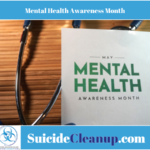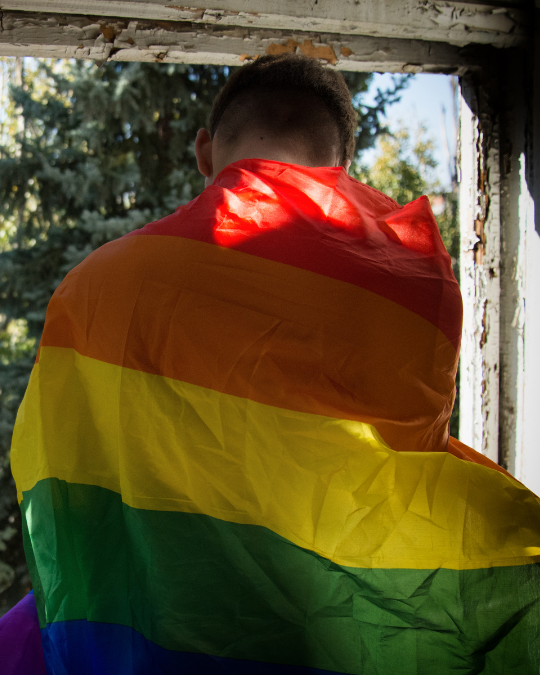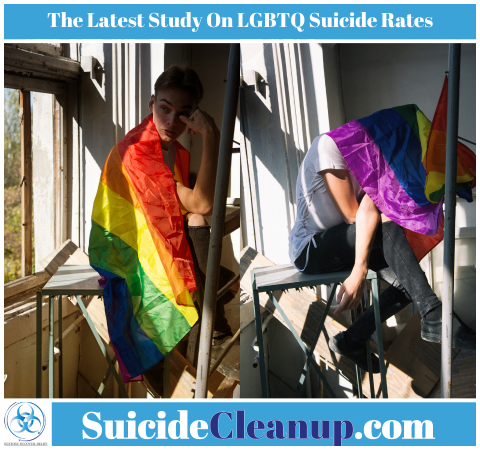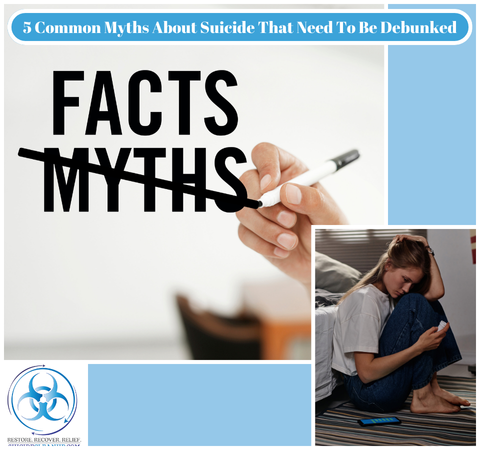
Mental Health Awareness Month: The Role of Suicide Cleanup in Healing
May 30, 2024
Understanding Suicide Risk Assessment
August 6, 2024The statistics surrounding LGBTQ suicide rates and mental health are sobering and demand our attention. Studies have consistently shown that individuals who identify as lesbian, gay, bisexual, transgender, or queer face significantly higher risks of suicidal ideation and attempts compared to their cisgender, heterosexual peers. According to the latest research young LGBTQ+ people are more than four times as likely to attempt suicide than their peers.
These stark disparities are driven by a range of complex social, psychological, and systemic factors – from discrimination and lack of family acceptance to barriers to accessing affirming mental healthcare. Addressing the LGBTQ suicide crisis requires a multifaceted approach focused on education, advocacy, and comprehensive support services.
Key Findings from the Trevor Report Survey
Here are some of the key findings from the Trevor Report Survey:
- In the past year, 39% of LGBTQ+ youth seriously considered attempting suicide, with this figure rising to 46% among transgender and nonbinary youth. Additionally, LGBTQ+ youth of color reported higher rates of suicidal thoughts compared to their White peers.
- Over 1 in 10 (12%) LGBTQ+ youth attempted suicide in the past year.
- Half of LGBTQ+ youth who sought mental health care in the past year were unable to access it.
- More than half (54%) of transgender and nonbinary youth felt their school was gender-affirming, and those who did reported lower rates of suicide attempts.
- 90% of LGBTQ+ youth reported that their well-being was negatively affected by recent political events.
- 45% of transgender and nonbinary youth reported that they or their families have considered relocating to another state due to LGBTQ+-related politics and laws.
Factors Contributing to LGBTQ Suicide Rates
The tragic reality is that LGBTQ individuals face significantly higher rates of suicide compared to the general population. This disparity points to the deep-rooted challenges and discrimination the LGBTQ community continues to grapple with. Some of these include:
- Social stigma
- Lack of family support
- Bullying
- Homelessness
- Mental health challenges
Bullying
Out of the factors listed above bullying does seem to be one of more significant ones. Out of all the young LGBTQ+ people who attempted suicide 18% reported that they experience either in-person or cyber bullying. Here is some further insight into the bullying that they face:
- 49% of LGBTQ+ youth aged 13-17 reported experiencing in-person bullying in the past year, while 26% of those aged 18-24 reported the same.
- 35% of LGBTQ+ youth aged 13-17 reported being cyberbullied in the past year, while 24% of those aged 18-24 experienced similar online harassment.
- LGBTQ+ young people who experienced bullying of any kind reported three times the rate of attempting suicide in the past year compared to those who were not bullied.
Access To Mental Health Resources
Despite the high rates of anxiety, depression, and suicide risk among LGBTQ+ youth, half of them were unable to obtain the mental health care they needed. The Trevor Project survey shows that some of the most common reasons:
- I was afraid to talk about my mental health concerns with someone else
- I could not afford it
- I did not want to have to get my parent’s/caregiver’s permission
- I was afraid I wouldn’t be taken seriously
- I was scared someone would call the police or involuntarily hospitalize me
- I was afraid it wouldn’t work
- I was not out about my LGBTQ+ identity and was afraid of being outed
- I did not feel they would understand my sexual orientation or gender identity
- I did not want people to think something was wrong with me
- I have had a previous negative experience and did not want to have another one
How to Support LGBTQ+ Young People
One of the things that the survey showed is that LGBTQ+ youth report fewer suicide attempts when they have access to supportive environments and communities. It’s also crucial for people in their lives to understand, support, and advocate for their identities. Supporting LGBTQ+ young people, who are at a higher risk of suicide, involves several key actions:
- Create Affirming Spaces: Ensure that schools, homes, and community spaces are inclusive and affirming of LGBTQ+ identities. This includes using correct names and pronouns, displaying LGBTQ+ supportive symbols, and celebrating diversity.
- Provide Access to Mental Health Care: Make sure LGBTQ+ youth have access to mental health professionals who are knowledgeable and affirming of LGBTQ+ issues. This can help them receive the specific support they need.
- Educate and Advocate: Educate yourself and others about LGBTQ+ issues and advocate for policies that protect and support LGBTQ+ individuals. This includes fighting against discriminatory laws and practices and promoting equality and inclusion.
- Offer Emotional Support: Listen to and validate the experiences and feelings of LGBTQ+ youth. Be a source of unconditional support and let them know they are not alone.
- Build Community Connections: Help LGBTQ+ youth connect with supportive communities, both online and in person. This can include LGBTQ+ clubs, support groups, and events where they can meet others who share similar experiences.
- Promote Safe and Inclusive Schools: Advocate for anti-bullying policies and programs that specifically address LGBTQ+ issues. Encourage schools to provide training for staff and students on LGBTQ+ inclusion.
- Encourage Self-Care and Resilience: Teach and encourage practices that promote mental well-being, such as mindfulness, physical activity, and creative expression. Help LGBTQ+ youth build resilience and coping skills.
By taking these steps, you can significantly contribute to the well-being and safety of LGBTQ+ young people, reducing their risk of suicide and helping them thrive.
What This Study Means For Us As a Society
The latest Trevor Project study on LGBTQ suicide rates underscores the urgent need for comprehensive support systems for LGBTQ+ youth. The findings reveal alarming statistics on the prevalence of suicidal thoughts and attempts among this demographic, particularly among transgender and nonbinary individuals. These insights highlight the critical importance of creating affirming spaces, providing access to competent mental health care, and fostering supportive communities. By understanding and addressing the unique challenges faced by LGBTQ+ young people, we can work towards reducing their risk of suicide and ensuring they have the resources and support necessary to lead healthy, fulfilling lives. As we continue to advocate for equality and inclusion, it’s essential to prioritize the mental well-being of LGBTQ+ youth, empowering them to thrive in a more accepting and understanding world.
If you or a loved one is currently struggling with anxiety, depression or thoughts of suicide make sure you seek help as soon as possible.



